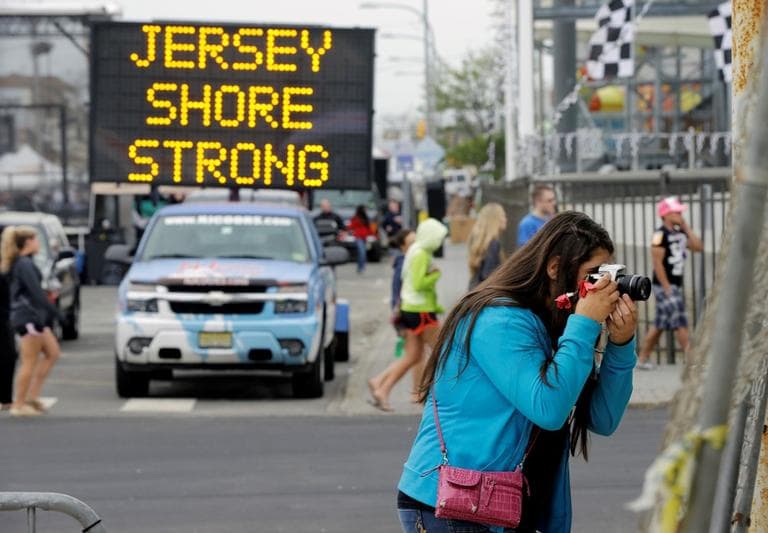Advertisement
Jersey Shore Readies For Summer Post-Sandy
ResumeIn New Jersey, Hurricane Sandy killed dozens of people and caused nearly $30 billion in damage. The question many people will be asking come Memorial Day is: will the shore be open for business?
With nearly 20 billion tourist dollars at stake, Governor Chris Christie says restoring the shore is state's biggest priority. But is restoring the shore — bringing it back to just the way it was before Sandy — a pipe dream?
"As a planner put it to me, ‘You just can’t support a penny arcade at today’s real estate prices.’ That’s the conundrum."
Brian Donohue
The question about the Jersey Shore’s preparedness for the summer season is a complicated one, according to Brian Donohue, a reporter and videographer at The Star-Ledger.
“I would probably say it’s half open," Donohue told Here & Now's Robin Young.
For example, Seaside Heights is anchored by two piers — one of which is closed for the season, and the other will only be half open.
Some parts of the Jersey Shore are almost entirely dependent on revenue generated by tourism during the summer season and property taxes. A study from the Rutgers School of Public Policy and Planning estimates the state will lose $950 million in revenue for the summer season.
Donohue says some residents have been unable to come back and start rebuilding due to delayed or unexpectedly low flood insurance payments. Donohue says retirees and long-time residents—people whose families have lived on the shore for generations—are the heart and soul of the area.
Many of them, because they inherited their homes or have paid off their homes, never felt the need to get flood insurance.

“You need flood insurance to get a mortgage, but if your mortgage is paid off, and you’re looking for ways to cut costs," Donahue said. "A lot of people just didn’t have flood insurance. They never saw this extensive damage before.”
With the potential exodus of older, longtime Jersey Shore residents, Donohue fears that the Shore will lose its unique flavor.
“Things become more homogenized. That’s something we’ve already seen over the past couple of decades here at the Shore,” Donohue said. “There’s going to be a lot of economic pressure on these people to go upscale.”
Donohue describes the town of Long Branch, N.J., where the boardwalk burned down in the 1980s. The old boardwalk--with carnival games and rides--was replaced with what Donohue describes as “a glorified, upscale mall.”
“As a planner put it to me, ‘You just can’t support a penny arcade at today’s real estate prices.’ That’s the conundrum,” Donohue said.
But Donohue, who takes his family to the Shore every summer, remains hopeful for the Shore’s continued survival. He took his seven-year-old daughter with him while on assignment at a devastated beach, littered with debris and destroyed houses.
“She got out of the car and ran past all of that and didn’t pay one lick of attention to it. She went right down on the sand and started making a sand castle,” Donohue recalled. “And I realized that the kids don’t see what’s destroyed, they just see what’s there.”
Time-Lapse Video: Deconstruction of Jet Star Roller Coaster
Guest:
- Brian Donohue, reporter for The Star-Ledger and producer of Ledger Live, the newspaper's video webcast. He tweets @briandonohue.
This segment aired on May 22, 2013.
